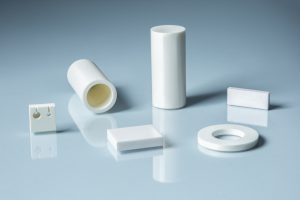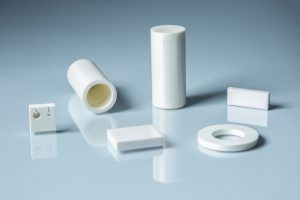The main raw material of zirconia ceramics is high purity zirconia powder, and its performance and content have a great impact on zirconia ceramics. Besides that, the properties of zirconia ceramics are affected by other factors. In order to prepare high-performance zirconia ceramics, we should control the main influencing factors, including raw material size, molding method, and sintering.
Forming method
Zirconia ceramics with low porosity and high density have excellent jointing properties. High density means that the grains in the ceramic body are closely arranged, and it is not easy to form a destructive breakthrough point when subjected to external loads or corrosive substances.
The forming method is the key to obtaining the calcium density of the ceramic embryo body. Zirconia ceramics are usually formed by means of dry pressing, isostatic pressing, and hot die-casting. Different methods have different characteristics and have different effects on sintering properties as well as the microstructure of curing rate ceramics. Generally, grouting and hot die-casting are the main technologies for products with complex shapes, while dry compression molding can be adopted for products with simple shapes. Generally speaking, the density of dry-pressed products is better than that of hot-die-cast products.
The particle size of the raw material
The particle size of raw material has a great influence on the properties of products. Only when the raw material is fine enough can the final finished product be fired into a microstructure, which makes it have good wear resistance. The finer the zirconia powder particles are, the more active they are and the sintering can be promoted.
Due to the difference between corundum and glass phase linear expansion coefficient, the stress concentration at the grain boundary can reduce the risk of cracking. The fine grain can also hinder the development of micro-cracks, and it is not easy to break into transgranular, which is conducive to improving fracture toughness and abrasion resistance.

Sintering
Sintering of ceramic is the densification process of raw ceramic at high temperatures. With the increase in temperature and time, the adhesion between powder particles and the strength of sintered body increase, the aggregation of powder particles becomes a strong polycrystalline sintered body with a certain microstructure, and the required physical/mechanical properties of products or materials are obtained. The densification rate and the final structure of the sample often reflect what kind of heat treatment process it has gone through.
Please visit http://www.samaterials.com for more information.
